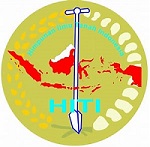PENGGUNAAN MULSA TERHADAP PERTAMBAHAN TINGGI TANAMAN GORAKA MERAH (Zingiber officinale, Rosc.) DI KECAMATAN TOMBARIRI
DOI:
https://doi.org/10.35791/se.22.1.2022.39882Keywords:
height of Goraka, plastic mulch, litter mulch, recommended fertilizer dose tinggi Goraka mulsa plastik mulsa serasah dosis pupuk anjuranAbstract
Mulches on the Height Growth of Red Goraka (Red Ginger, Zingiber officinale, Rosc.) Plants in Tombariri District
This study documented the effect of using plastic mulch and litter mulch and the recommended dosage of PT Bintang Toejoe fertilizer on the growth of the Goraka Merah (Red Ginger) plants in Tombariri District. The study was conducted on a smallholder coconut plantation by documenting the soil profile, measuring the height (cm) of the Goraka plants in 6 treatments and 4 replicates, which was carried out every week for three months starting at the beginning Goraka growths of 21 clumps/beds in total of 24 beds. The topsoil in the Tambala study area has a clayed loam texture with a very dark brown soil color which is relatively fertile compared to its subsoil. In the beds without fertilizer, the highest growth of Goraka Merah was seen in the mulch treatment compared to the no-mulch treatment. The growth of the Red Goraka with the recommended dose of fertilizer treatment was better than the growth without fertilizer. While in fertilized conditions, the growth of Goraka with plastic mulch, litter mulch and control treatments were similar in the first three months of Goraka Red Ginger growth observations.
Downloads
Published
How to Cite
Issue
Section
License
Authors who publish in this journal agree to the following terms:
Authors hold their copyright and grant this journal the privilege of first publication, with the work simultaneously licensed under a Creative Commons Attribution License that permits others to impart the work with an acknowledgment of the work's origin and initial publication by this journal.
Authors can enter into separate or additional contractual arrangements for the non-exclusive distribution of the journal's published version of the work (for example, post it to an institutional repository or publish it in a book), with an acknowledgment of its underlying publication in this journal.
Authors are permitted and encouraged to post their work online (for example, in institutional repositories or on their website) as it can lead to productive exchanges, as well as earlier and greater citation of the published work (See The Effect of Open Access).




